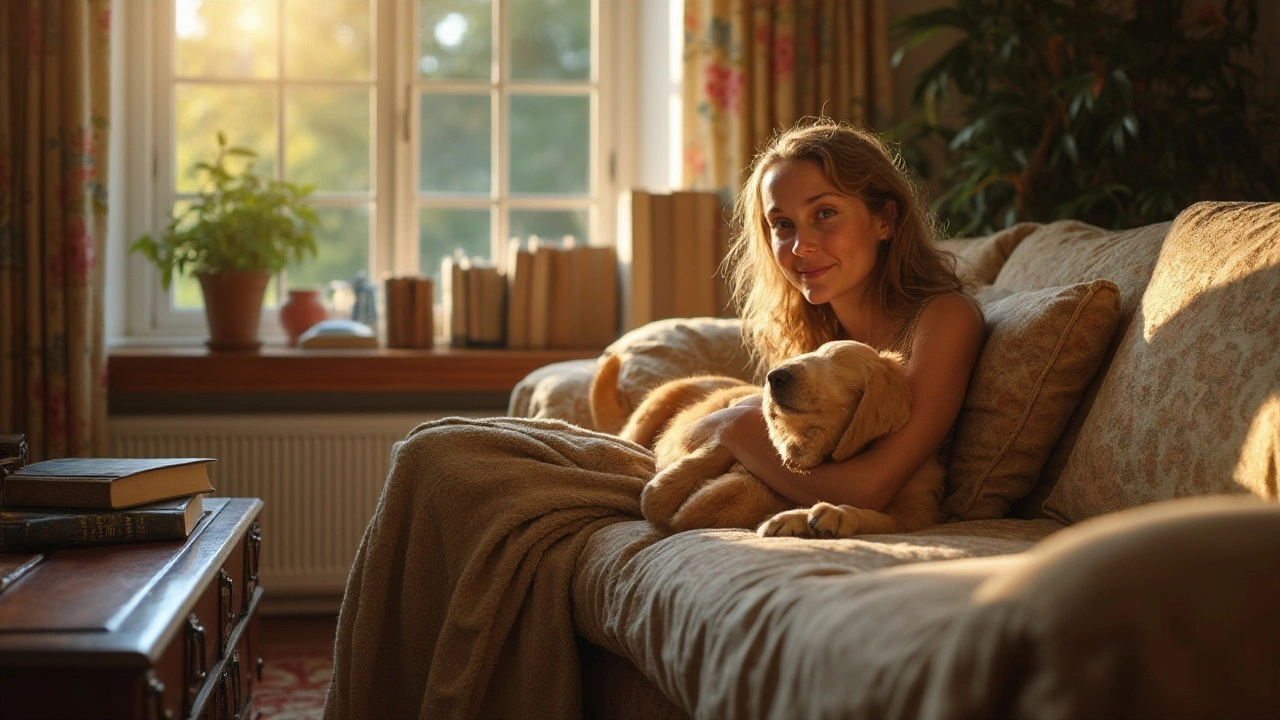Couch Training: How to Teach Your Dog to Stay Off the Sofa
If your pup treats your couch like a personal chew toy, you’re not alone. Most owners discover the problem after the first sofa stain. The good news? A few simple steps can change the habit without harsh punishment.
Why Couch Training Matters
First, the couch isn’t designed for rough paws. Constant jumping can loosen cushions, and chewing can damage fabric beyond repair. Second, a dog that jumps up may feel encouraged to jump on other furniture, making house rules harder to keep. Finally, keeping your dog off the sofa reduces the risk of falls for both of you, especially if you have a senior pet or small children.
Even a short indoor collar safety guide can help. If you decide to keep a collar on while training, make sure it’s a breakaway style that won’t get caught on armrests. This small safety tweak lets you focus on behavior instead of worrying about accidents.
Step‑by‑Step Couch Training Plan
1. Set clear boundaries. Use a cue like “off” or “down” every time your dog tries to hop up. Consistency is key – say the same word and follow it with a gentle push or guide away from the couch.
2. Offer a better spot. Place a comfy dog bed or crate near the couch. Many owners find that a blanket in the crate makes the new spot feel safe and inviting. Your pup learns there’s a place to relax that’s just as cozy.
3. Reward the right choice. When your dog chooses the bed over the sofa, give a tasty treat, praise, or a short play session. Positive reinforcement works faster than scolding, and it builds trust.
4. Use a deterrent. A pet‑safe spray or a sheet of aluminum foil on the couch can make the surface unappealing. The goal isn’t to scare your dog, just to make the couch less interesting.
5. Keep training tools appropriate. If you’re using a training collar, pick one that’s humane and fits snugly without causing pain. Many vets recommend a flat buckle collar over a choke chain for everyday use. Remember, the collar is a cue, not a punishment.
6. Practice short sessions. Ten‑minute training bursts a few times a day keep your dog focused. End each session on a success, then give a quick break before trying again.
7. Stay patient. Some dogs take weeks to break the couch habit, especially if they’ve been allowed on it for years. Keep your tone calm, avoid yelling, and celebrate each small win.
Combine these steps with a solid daily routine – regular walks, mental games, and balanced nutrition – and you’ll see faster progress. A tired, mentally stimulated dog is less likely to seek the couch for excitement.
Finally, remember that couch training isn’t a one‑time fix. Check in regularly, especially after holidays or new family members arrive. Small adjustments keep the habit from creeping back.
With clear cues, a comfy alternative, and consistent rewards, your sofa can stay couch‑free and your dog can stay happy and well‑behaved. Ready to give it a try?
- Morgan Ainsworth
- 0 Comments
Is Cuddling Your Puppy on the Couch Good for Them?
Having your puppy cuddle on the couch is not only heartwarming but also beneficial for both of you. While there are opinions on hygiene and training concerns, understanding the balance between comfort and discipline is key. Puppies often feel secure and loved when they snuggle with their owners. Discover how to make couch time safe and rewarding for both you and your puppy.
View More
